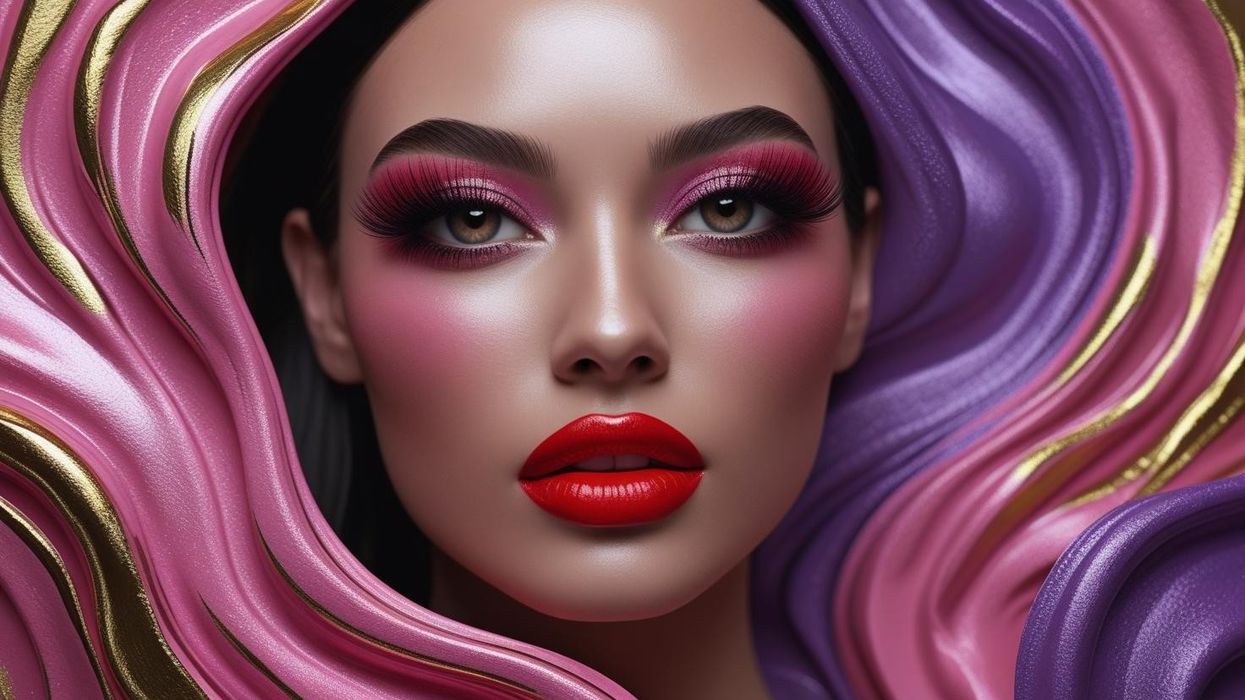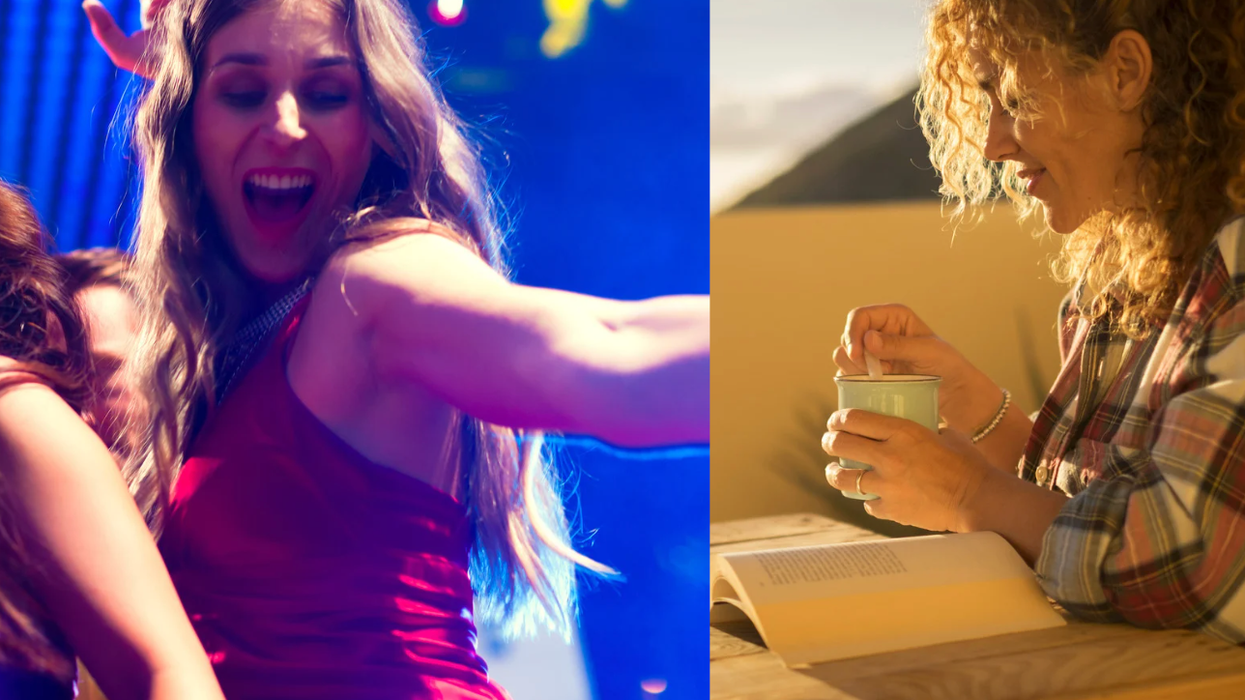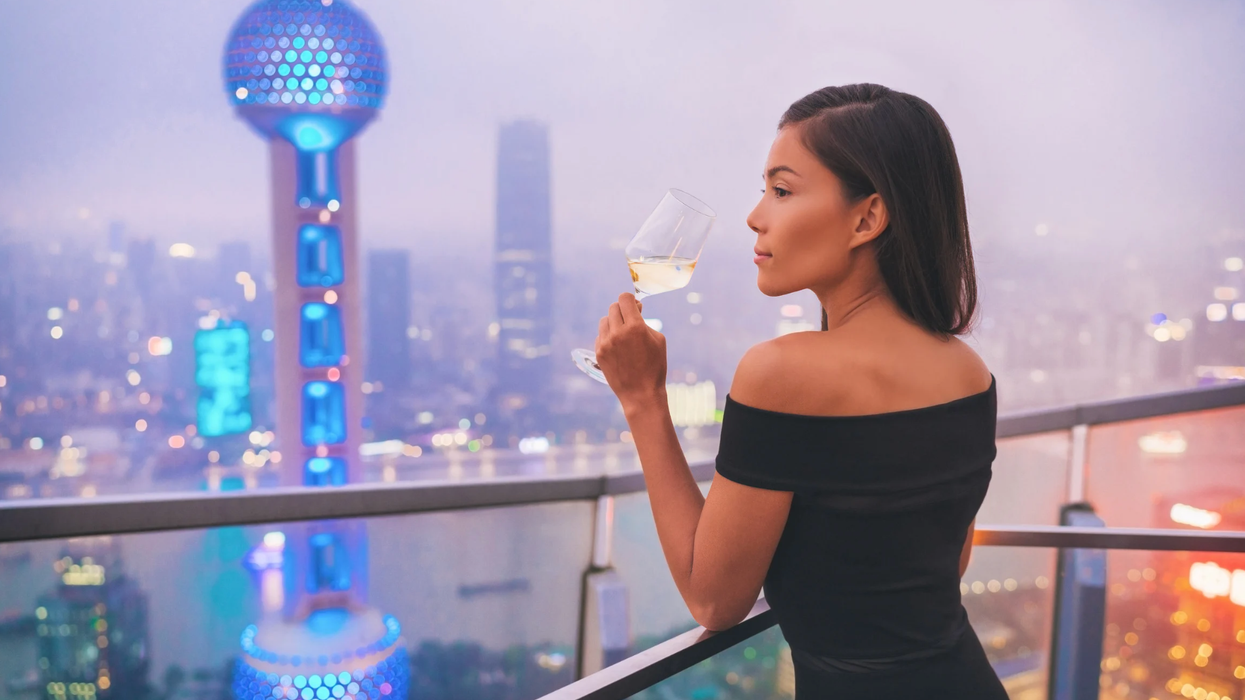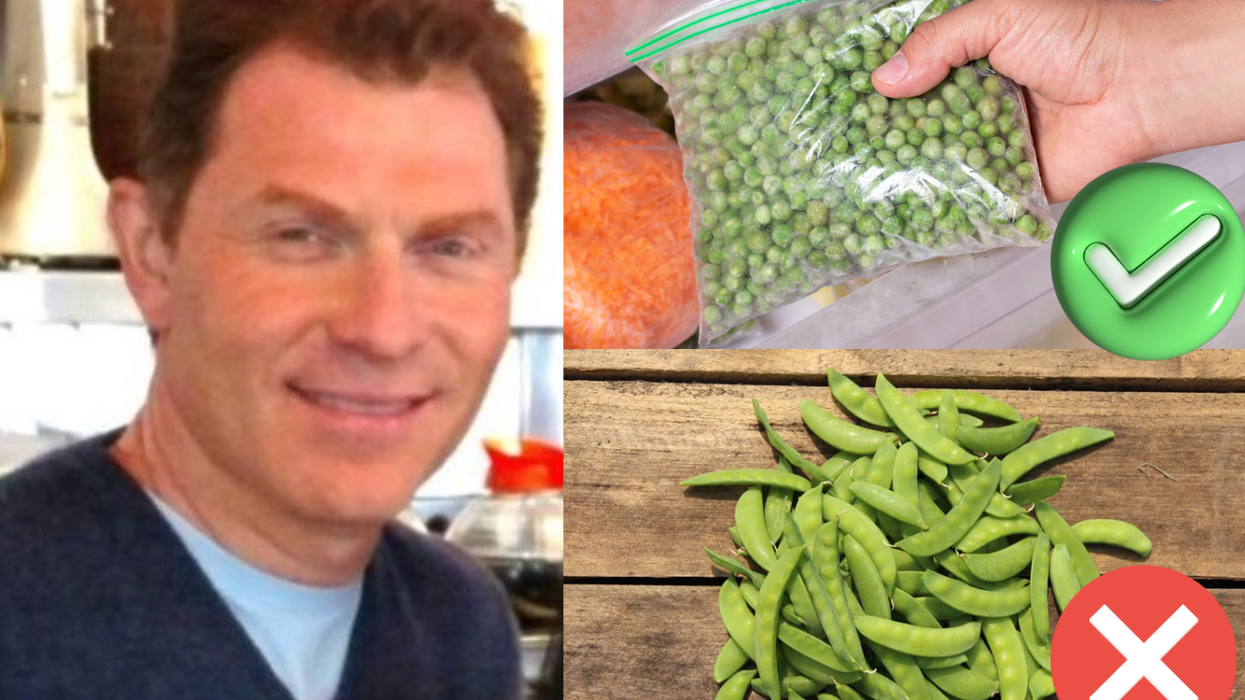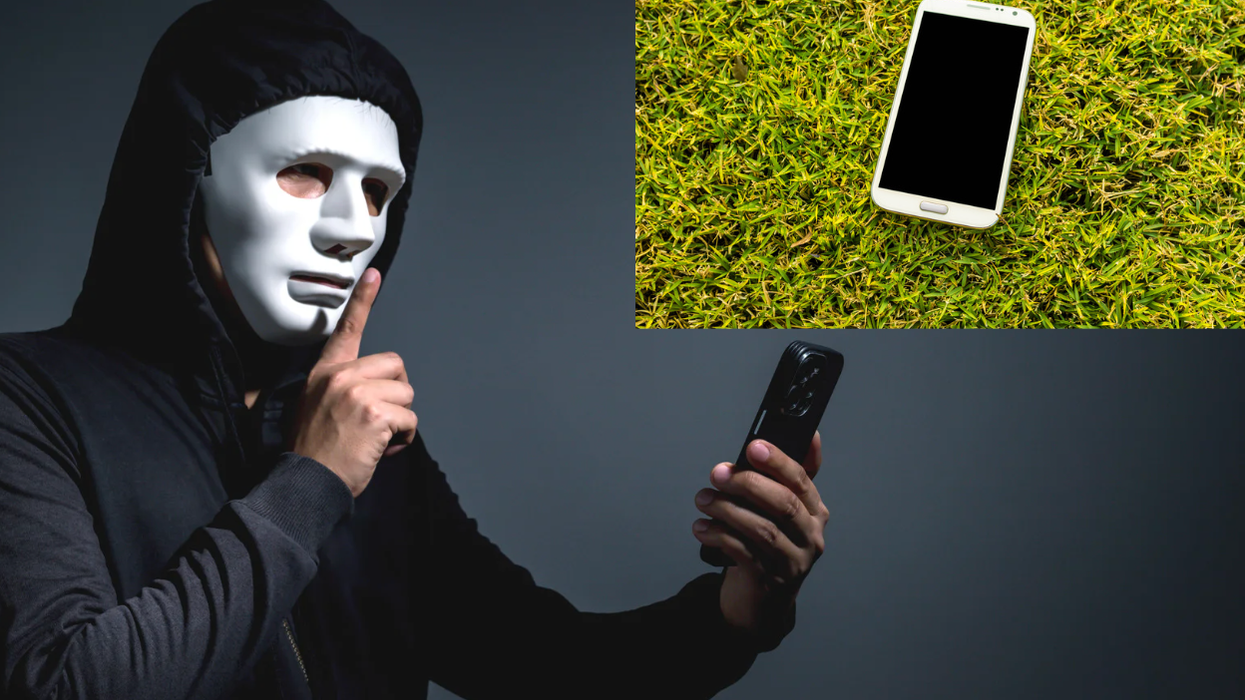On the day of the ceremony, I was antsy. In preparation, I had forgone everything from caffeine and deodorant to newspapers and food. I wasn’t feeling remotely like my normal self. I ate a little rice and looked at Facebook, but mostly didn’t cheat. I spent a lot of time sitting on my sofa, hoping I would emerge from all of this with insight. I made my friend Joe promise he’d come over and check on me the next morning.
As the sun set, I dressed in white and packed a yoga mat, pillows, a blanket, and some pears for when the ceremony was over. I directed my cab driver to an off-duty yoga studio in Chelsea, where I’d be taking ayahuasca, a powerful South American psychedelic tea that proponents say promises not just a drug trip but a healing spiritual journey.
I staked out a spot against the wall and grabbed my personal vomit bucket, a plastic trick-or-treat jack-o'-lantern lined with a garbage bag. I made small talk with my neighbors. There were about 60 people there, mostly white 20- and 30-somethings with tattoos and asymmetrical haircuts. I heard someone talking about Burning Man. But there were also beatific 40-year-olds who looked like they had serious yoga practices, a bourgeois Indian couple, and a few senior citizens. The shaman, in his off-duty clothes, a sweatshirt and jeans, began setting up.
For centuries, South Americans have used ayahuasca in healing ceremonies and to communicate with ancestors. The vine Banisteriopsis caapi is found deep within the Amazon Rainforest. Shamans, called ayahuasceros, remove the bark, beat it until it’s soft, and then boil it into a tea with various plants that contain the Schedule I drug dimethyltryptamine, commonly known as dmt. The shamans are so powerful, believers say, that they can see deep childhood wounds and decide how much tea to give you just by reading your body language.
Once they drink the tea, users have what is usually an all-night psychedelic experience. They see verdant landscapes, Tetris-like formations locking and unlocking, people turning into jaguars or being swallowed by snakes. It sounds something like a more sinister version of Avatar. People purge, writhe in pleasure and agony, talk to spirits, feel clairvoyant.
But that’s just the fireworks. According to its proponents, the real allure of ayahuasca is its potential to help users confront pain—both physical and emotional—and reckon with their inner demons, leaving them feeling like they had done years of therapy in a matter of hours. From ecstasy to lsd, psychedelics have long had a role in experimental therapies, and ayahuasca is the latest drug to be used not as recreation, but as a conduit for personal insight.
As word of its therapeutic properties has spread, more and more religious questers have made pilgrimages to see well-known shamans in the Amazon. An industry has grown up around its use, mostly in Peru, where the city of Iquitos has become a kind of Times Square for ayahuasca tourism. It’s been written about everywhere from the London Times and National Geographic to The Atlantic. It’s appeared on the television shows Weeds and Nip/Tuck, and in a movie called Blueberry. Any self-respecting New Age bookshop has an ayahuasca section. Josh Radnor, star of the sitcom How I Met Your Mother, is coming out with an ayahuasca memoir this month, called One Big Blissful Thing, which is described by his publisher as "Eat, Pray, Love for those who would rather be reading McSweeney’s.” Sting, Tori Amos, Devendra Banhart, and Paul Simon have all spoken about trying it. A performance series called The Ayahuasca Monologues, originally out of New York, is in its fifth year. “There’s a curiosity about the phenomenon,” says the Monologues’ organizer, Jonathan Talat Phillips. “We asked how many had heard about it the first year, and a quarter of the audience raised their hands. This year maybe half had said they’d tried it.”
I wanted to try it. And in theory, I could do so without hopping a flight to the jungle: Even though ayahuasca is illegal in most of the United States, would-be drinkers of the spirit vine are increasingly able to sample it in the American city of their choice. Still, it’s not a drug that you can buy from a dealer or on a street corner. You’ve got to find an underground shamanistic ceremony.
Nicolette, who didn’t want to use her real name, is a 28-year-old yoga instructor who took ayahuasca for the first time in New York, where she lives. After someone at a yoga-teacher training session mentioned it, she became curious. The first time she tried ayahuasca, she took it with a shaman and had powerful visions of her parents, who had both died when she was young.
“It’s sort of like the Wild West of consciousness—you dive into your space and have really powerful visionary experiences led by songs by the shaman,” Nicolette says. In December 2008, Nicolette started taking ayahuasca regularly, and has done it at least 50 times.
News of ayahuasca first spread beyond South America when a geographer named Villavicencio, in his 1858 book Geography of the Equator, mentioned “a magic drink” used by tribes. By the 1950s, psychedelics were coming into vogue as a way to get in touch with the outer reaches of the mind and were studied by academics like revered Ivy League ethnobotanist Richard Evan Schultz, who influenced Allen Ginsberg, Timothy Leary, and William S. Burroughs.
Addicts credit the plant with helping them kick drugs and alcohol. In 1993, UCLA launched the Hoasca Project (hoasca is the Portuguese translation of ayahuasca), a biomedical investigation of the longterm effects of its use in Brazil, where the drug is legal. The study found that instead of destroying the brain, ayahuasca increases the number of transmitters that feed it with serotonin. In other words, there is science behind the euphoria.
In the magazine Maisonneuve, writer Jeff Warren recounts a conversation with a friend about ayahuasca. “I suggested the most prudent explanation lay with the brain’s chemistry and the intersection of the drug’s two active agents,” he writes. “One plant boosts the amount of serotonin in the body, creating a hyper-alert ecstatic feeling, while the other boosts the amount of dmt, a naturally occurring brain chemical thought to play a role in rem sleep. ‘Thus,’ I said, ‘the serotonin circle overlaps with the dmt circle, and we sit in the middle, submerged in a waking dream.’”
Most people who seek out ayahuasca, though, are looking for an experience that transcends logic and science, or at least transcends the low expectations one might have of a ceremony in which each user is issued a barf bucket. “Ayahuasca completely transformed my reality,” says Talat Phillips, Ayahuasca Monologues organizer and author of The Electric Jesus: The Healing Journey of a Contemporary Gnostic. “I didn’t believe in a spiritual reality and my materialist worldview was shaken. The great thing is that this isn’t a party drug. I’m impressed by the practitioners because it’s not easy and it’s also not fun.”
There are two main ways of taking ayahuasca: with a shaman or as part of a religious service. In a shamanic ceremony, you sit on a mat and go within, not interacting with anyone else. The religious use is far different. The Santo Daime (“holy give me” in Portuguese) sect, which combines Christianity with Kardecist Spiritism, believes that the tea is a sacrament, a manifestation of Jesus Christ that brings practitioners closer to God. A Santo Daime service lasts four or five hours, sometimes as long as 14. Men and women sit on opposite sides of the room, and there are candles and a table in the center of the room like an altar.
Nicolette, who joined a Santo Daime community in 2008, prefers the church setting to the shamanic. “I’m an Aquarius,” she says, “so social movements and groups and working toward higher causes are important to me.” She is one of the younger members of her community, a diverse group of Americans, Russians, Brazilians, and Colombians in their 20s to their 50s. “There’s a sort of foundation and strength in numbers,” she says. “We utilize prayer to pray for each other, world issues, what’s going on with water and deforestation in South America, pray for the children of the world. It’s very socially conscious.”
When her church meets, about twice a month, anywhere from five to 200 people pay between $40 and $250 apiece, which covers the cost of the ayahuasca plus renting out a space (often an after-hours yoga studio) where they can practice. She has never asked how the tea is brought to the United States.
Because the sacrament at the heart of their religion is illegal, new practitioners have to be vetted by community members through a series of interviews and orientations. Their caution is understandable—to some outsiders, ayahuasca is viewed as simple drug use, not religious practice. Jeffrey Bronfman, grandnephew of Seagram’s founder Samuel Bronfman, faced objections from both the government and his neighbors when he tried to build a Santo Daime church in a posh part of Santa Fe, New Mexico.
Despite the fact that ayahuasca can be legally used in church settings in Hawaii and Oregon, communities there are just as closed off to outsiders as Nicolette’s, rumored to not allow members who aren’t residents of that state. People who have taken ayahuasca have a habit of assuring those who are interested that the vine will find them. “When they have the desire to practice, they will find it,” Nicolette says. “Where there’s a will there’s a way.” But when I asked Nicolette if I could try it with her community, she didn’t invite me along. While there’s a desire to create awareness about the drug, there are also sensitive legal issues, Nicolette says. “It’s still scary for those of us who want to practice our religion.”
And then there’s the question of the efficacy of drinking ayahuasca in the United States, far from its native jungles of South America. “There’s only so much we can handle here,” says Nicolette. “When we’re done, we have to walk through the streets of New York. You go back to Penn Station, it’s intense! Imagine that after you’ve opened up your third eye.” People in her community aren’t allowed to ride the subway home after ceremonies. If you’re taking it while on vacation in Peru, you can spend the next day relaxing in a hammock, processing the experience. In America, you have the comfort of being at home, but you also have to go to work, deal with people, be present the next day. “It’s a challenge if you’ve had a rough night of your own personal purgatory,” says Nicolette. “For that reason the ceremonies themselves are more intense in other parts of the world, though there’s still amazing work, deep work being done here.”
Margaret de Wys, the author of Black Smoke: A Woman’s Journey of Healing, Wild Love, and Transformation in the Amazon, accompanied a shaman on his first trip to the United States. “In New York, it was artists and psychiatrists, and they needed twice as much tea! It was more suspect and intellectual; it was very different from all of the times I had used it in South America.” De Wys recommends interested parties fly to the rainforest to do it in its native habitat. “I’ve done it in the U.S., and it’s been disappointing to me,” she says. “There is something to be said about doing in the nature, where you see anaconda snakes and jaguars.” De Wys likens the difference between taking ayahuasca in the jungle versus the city to “enjoying a spa in Sedona as opposed to some dumpy, dipshit place on the corner.”
“Ayahuasca-based religion is flowering all over the world,” says Adam Elenbaas, who wrote a memoir called Fishers of Men: The Gospel of an Ayahuasca Vision Quest. “It’s diversifying itself. It’s the first worldwide psychedelic-based religious movement.” As with yoga’s nascent days in the United States, a culture is slowly building around it. But, Elenbaas says, ayahuasca use has no bureaucratic center and “there is too much hippiedippie New Age mumbo jumbo surrounding the culture in general” for it to become widespread.
That’s a good thing, says Itzhak Beery, who has worked as a shaman in New York City since 1995 but believes ayahuasca use should stay in the jungle. “The spirit of the plant belongs there and not here. There are some people that have had bad experiences here—they had encounters with entities that were not very friendly and experiences that they didn’t know how to deal with.” He advises anyone taking ayahuasca, but particularly those in the United States, to tread carefully.
The conversation with Beery made me anxious—he was the first person who warned me against using it in New York—but I was still dying to try it.
Eventually, my contact information made its way from a friend of a friend to someone organizing an ayahuasca ceremony with a shaman in the States. I was in.
A five-page preceremony letter from the shaman explained that I should wear white, keep an upright posture, and take deep breaths. I was to be silent, stay with the group, and listen to the icaros, or shamanic songs. “You must pay less attention to the fireworks of ayahuasca and look for a more profound level of opening. Pay attention to this depth that leads to deeper consciousness and spiritual evolution.”
And then it got to the advance preparations. This plant medicine reacts negatively with antidepressants and antianxiety medications, and as luck would have it, I was on both. One night I drove myself into paranoia by reading forums about how the combination of ayahuasca and ssris (most antidepressants) could be fatal. I immediately stopped taking Abilify and Pristiq, and bid farewell to my Xanax stash, which left me an emotional wreck and gave me days of vertigo. I quit smoking pot. I stopped drinking alcohol. For five days before the ceremony, I gave up pork, red meat, spicy foods, citrus, caffeine, dairy, and sex.
The scariest part was the waiver I was forced to sign, which included the line, “I VOLUNTARILY ASSUME FULL RESPONSIBILITY FOR ANY RISK OF LOSS, PROPERTY DAMAGE OR PERSONAL INJURY, INCLUDING DEATH."I signed it, gave my best friend’s number as my emergency contact, paid my postal money order for $230, and hoped I’d find some insight.
On the big day, I arrived at the yoga studio almost a full hour before the ceremony began, but I guess I shouldn’t have been surprised that ayahuasca enthusiasts aren’t the most punctual. Finally, the shaman changed into a long black robe, took a seat, and made his opening remarks, including a statement about how we were all born alone and die alone. This made me slightly scared, but mostly I was impatient. He told us to breathe, pay attention to the icaros, and sit upright the whole time. There were two people by the door who would remain sober and help us walk to the bathroom. The lights were turned off.
One by one, we drank the tea, which tasted a bit like prune juice mixed with coffee grounds. It had an oily finish.
I went to the bathroom and stared at myself in the mirror. Nothing. I sat back down, waiting for it to kick in, seeing if anything felt different or distorted. By this time, the shaman had started to sing. Sounds were what I noticed first: distant ambulance noises and the rustle of a neighbor scratching his head were equally loud. My tongue started to feel like it was growing in my mouth, and I had a moment of paranoia that I wouldn’t be able to breathe—my only anxiety of the night. But it subsided once I inhaled deeply and listened to the music.
I closed my eyes and began to see trails of color that looked like blood pulsing through a vein. The music intensified and then there were fireworks, vibrant colors, and geometric shapes. I opened my eyes and could feel the serotonin pumping through my system—my eyes rolled back in ecstasy. I may have drooled a little. At one point, I dove into Beyoncé’s stomach and saw her unborn child. People started throwing up. A man near me was vomiting, making me a little less high—until my friend Nick appeared. He danced a jig that erased everyone around me and I was suddenly back to my own thoughts. I saw golden birds flying everywhere.
A voice deep within me asked if I was ready to go deeper, and I said yes. I saw vignettes from my childhood, almost like watching a movie about my relationship with my parents. At first, each episode highlighted my strength and perseverance during an unhappy childhood. I could feel the drug congratulating me for surviving and thriving. And then, as if I were in A Christmas Carol, I was taken through more views of my childhood, this time illustrating ways in which I was hard on my family. I had a newfound sympathy for my parents. I opened my eyes and stared at the moon through a large skylight in the ceiling of the yoga studio and felt myself crying. But the rapid-fire insights didn’t feel violent or overwhelming; instead, they were gentle and healing, as if these answers had always been within me.
I would have some major insight followed by an odd, minor revelation—at one point I heard a voice telling me to use a neglected handbag more often. I whipped my hair around my face, played with my necklace, took my poncho on and off. I saw a man give one of the sober sitters a hug that seemed to last a full five minutes. When I managed to get on my feet and walk with a runway gait to the bathroom, in the mirror my eyes looked like saucers.
The path to sobriety felt long and gradual. I was sore from sitting—I had been there for seven hours—and was exhausted but elated. It had, in some ways, lived up to its promise: I felt like I had just condensed a few years of therapy into one night. But I didn’t feel like the drug had changed me for good, like some people said it might. I wasn’t disappointed, though. The experience fell somewhere between a thrilling recreational drug experience and something more medicinal. With pixilated landscapes and a lot of rainbows.
I wonder if the experience would have been wilder if I’d gone deep in the South American jungle with a smaller group and no cellphone service, no car horns in the distance, no pop-culture preoccupations. As the shaman closed the ceremony, he told us about one of his mentors, someone who had achieved the shamanistic equivalent of a black belt, who had the power to turn into a jaguar—something that I don’t think happened to anyone that night in the yoga studio. The jungle, he said, is full of mysteries. Manhattan, maybe less so.






